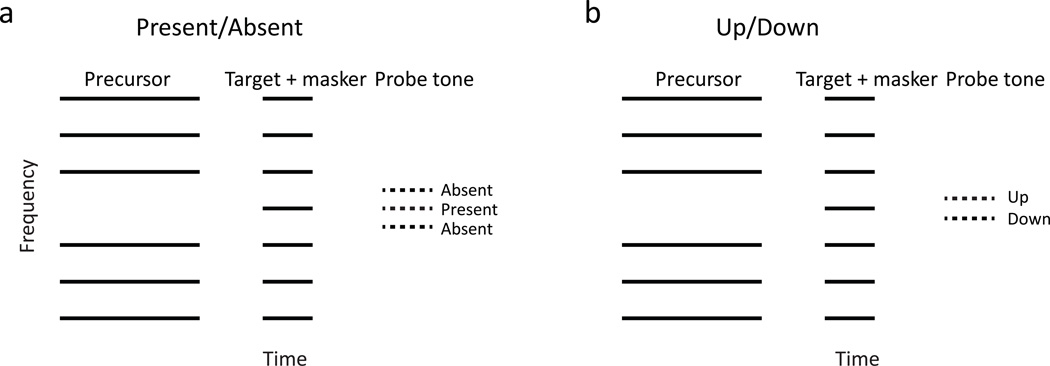Figure 1.
Schematic representation of the stimuli. Each interval includes a seven-component inharmonic complex comprising a target tone and a six-tone masker, followed by a probe tone. The dashed lines indicate all possible positions of the probe tone relative to the target in different tasks. Only one probe tone is presented in each trial. The target tone can be the 3rd, 4th or 5th component of the complex tone (4th in this example). The complex and probe tone are 50 ms long with a delay of 100 ms between complex offset and probe onset. The duration of the precursor can be 62.5, 250, or 1000 ms. The gap between precursor and complex can be 10, 100, or 1000 ms. a, In the Present/Absent task, the probe tone is either the same as the target tone (present) or centered in frequency between the target tone and one of the most adjacent component (absent). b, In the Up/Down task, the probe tone is either a semitone higher (up) or lower (down) than the target tone.

